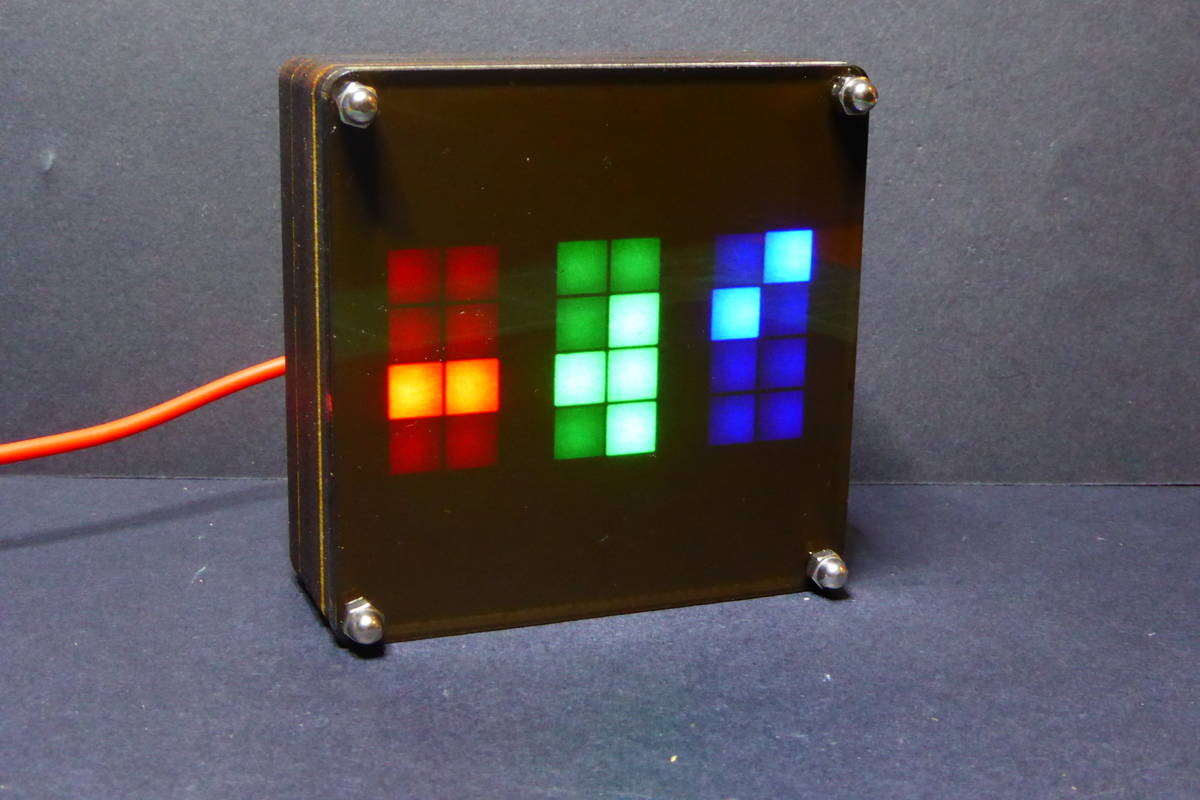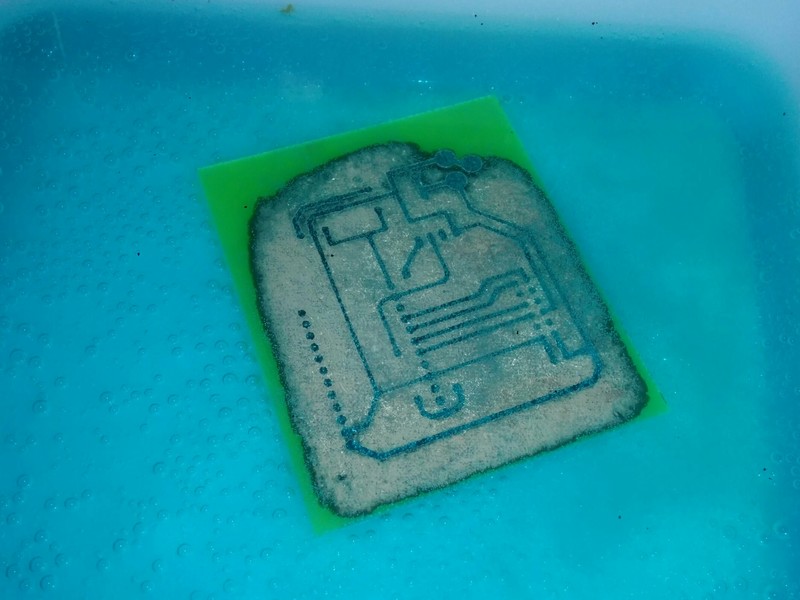
PCB fabs
A few years ago (not many) I used to burn copper plates using acetic acid, a.k.a. vinegar. I was somewhat concerned about using stronger acids so it was OK to use another acid, even if it was soooo sloooow. If you were patient you could get to have decent boards using 50mil traces (or even thinner). But it required keeping a good temperature on the copper bath and regulating the ratio vinegar/hydrogen peroxide continuously, adding a little salt from time to time to speed things up....

Slices of a clock
There are so many ways to tell the time. DIYers have been doing clocks since the Ancient Egypt (obelisks lacked portability, thou). Every modern maker has a clock amongst her first projects. I have done some myself, including a fibonacci clock, a wordclock with a fancy green matrix effect and an unreleased project that hopefully will see the light someday soon.
But recently I came back to the idea behind the wordclock before, to extend it in different ways:...

PCB etching at home using vinegar
PCB etching is another big topic in the electronics DIY world. It's something every electronics tinkerer ends up trying sooner o later. Even thou it's a fairly simple procedure it requires some self confidence (or bravery) since it involves strong, smelly and hazardous chemicals.
Any etching procedure you read about can be described in 5 different steps: designing, transferring, etching, assembly and reuse or disposal. For every one of these five steps there are different options and there are thousands of web pages with instructions, recommendations, how-to's… well, this is yet another one of those pages :)...


